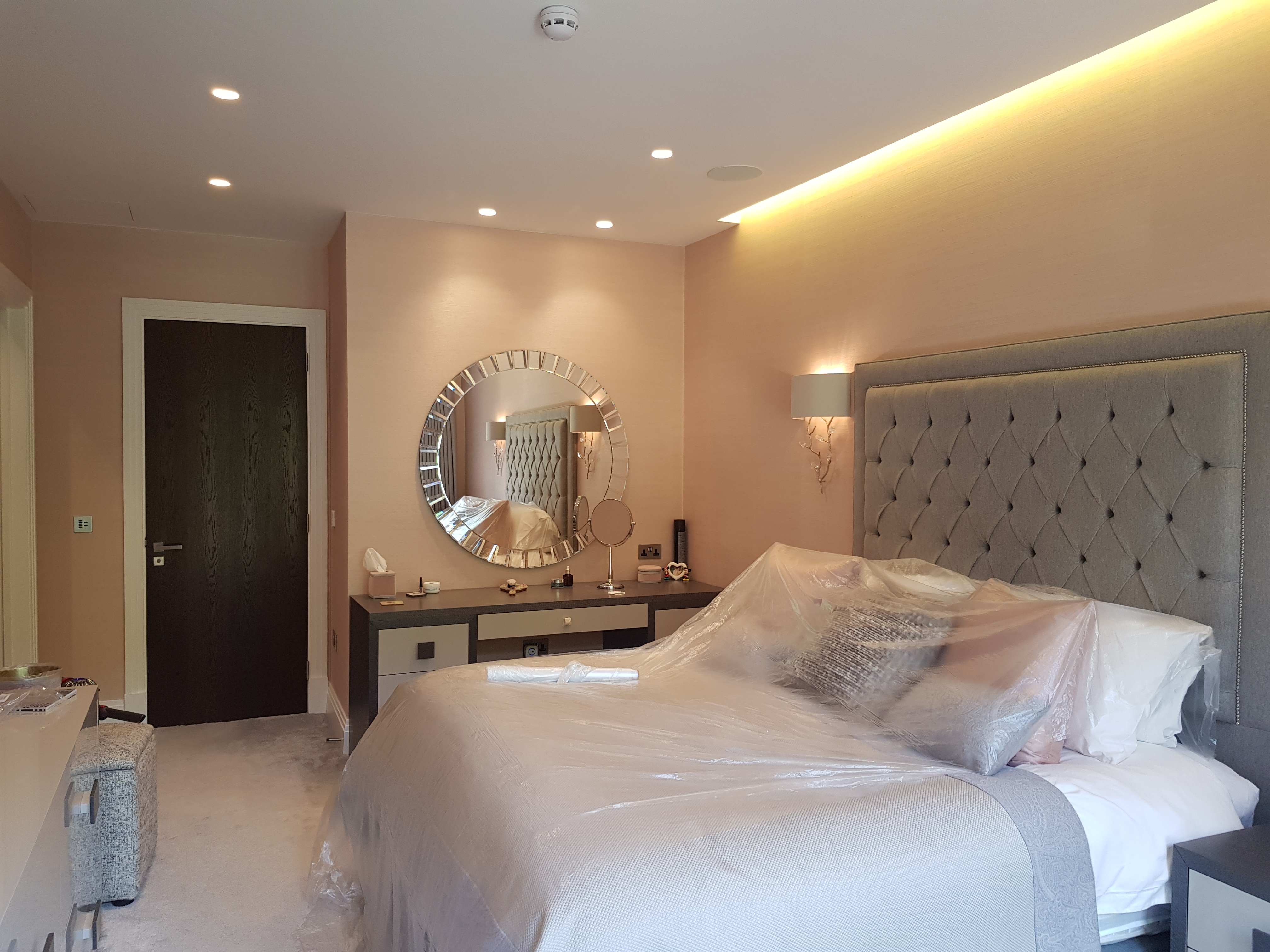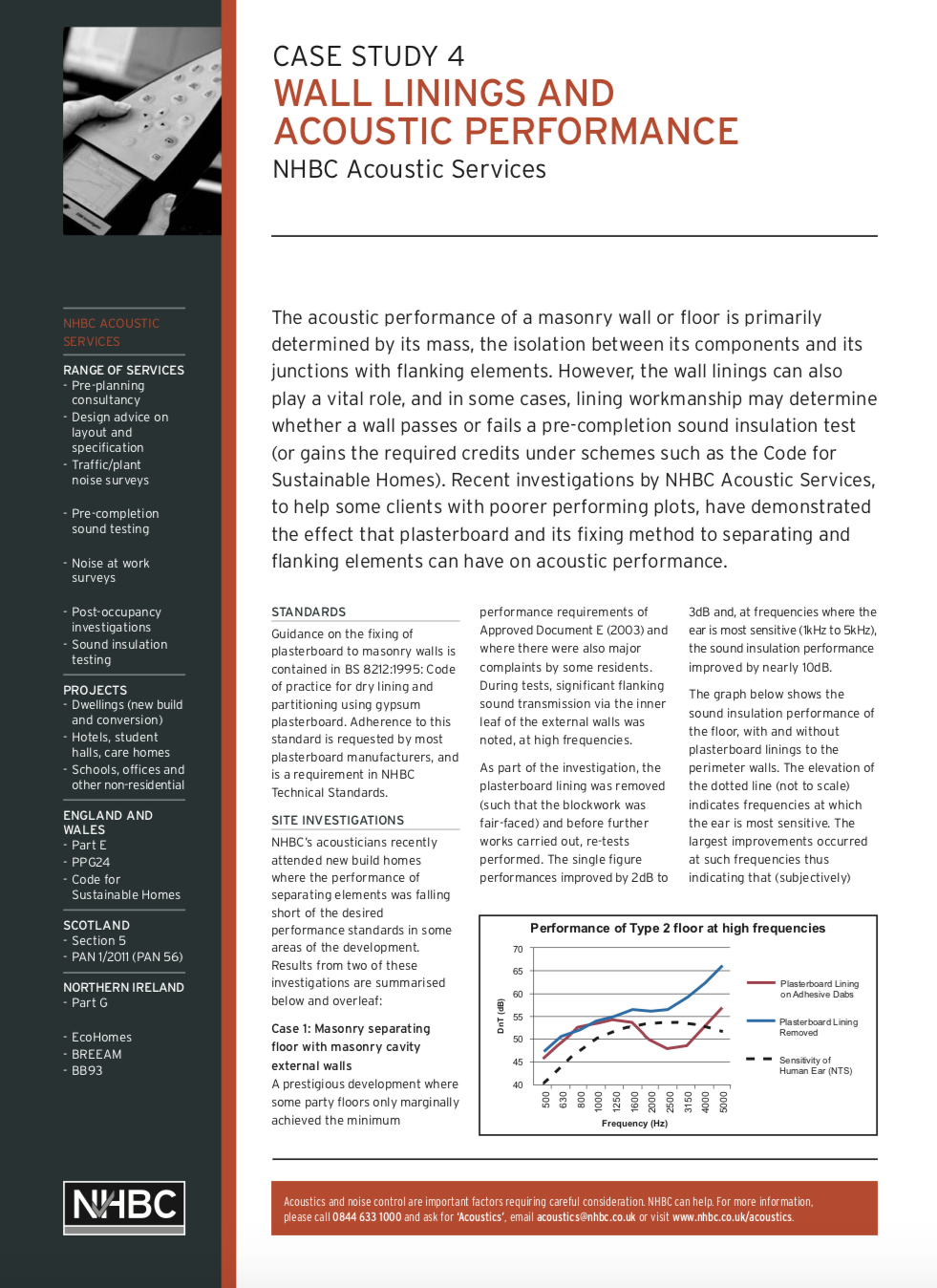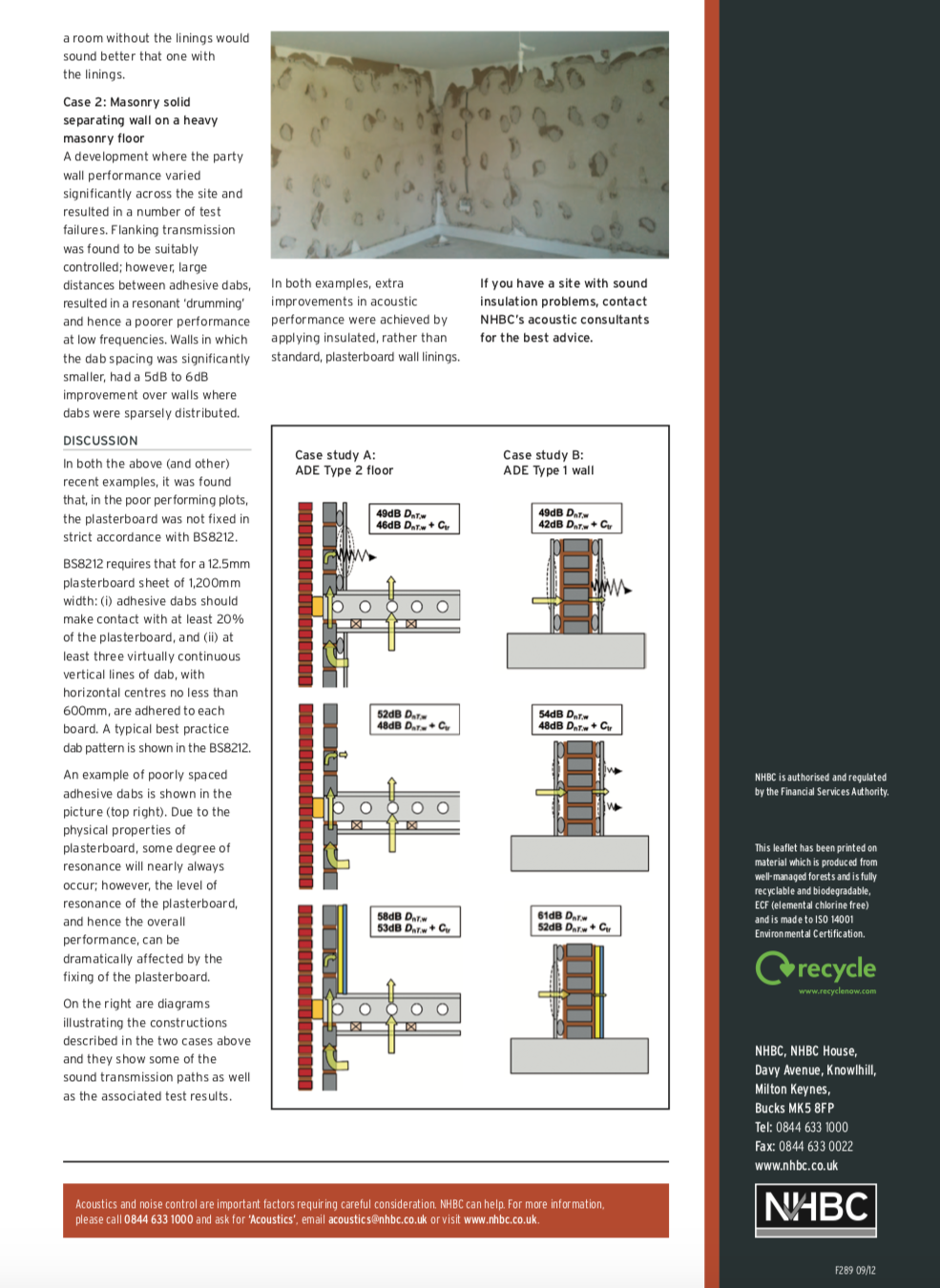BLOG 'A chronology of soundproofing systems London'
Flanking transmission (sound which travels in any direction, other than directly through the separating element) is a frequent problem in flatted developments, with high-frequency resonances commonly occurring where dot & dab plasterboard linings have been employed.
The issue can be profound; the NHBC, for example, conducted an experiment where they removed the linings (such that the supporting blockwork was left fair-faced) and recorded an improvement in sound insulation of almost 10dB (between 1kHz to 5kHz – the frequencies where the ear is most sensitive). The full case study can be viewed at the foot of the page.
A common cause is faulty workmanship, i.e. BS8212 requires that for a 12.5mm plasterboard sheet of 1,200mm width: (i) adhesive dabs should make contact with at least 20% of the plasterboard, and (ii) at least three virtually continuous vertical lines of dab, with horizontal centres no less than 600mm, are adhered to each board.
Mute Soundproofing® was recently commissioned to remediate this very issue, reducing flanking noise at a prestigious flatted development in north London, designing and installing a room-within-a-room system for the most noise sensitive spaces, before reinstating the original luxury finish.
Design and Installation of ‘Room-Within-A-Room’ System
Design and Installation of ‘Room-Within-A-Room’ System

 +44 (0) 20 3858 0833
+44 (0) 20 3858 0833 email
email




























